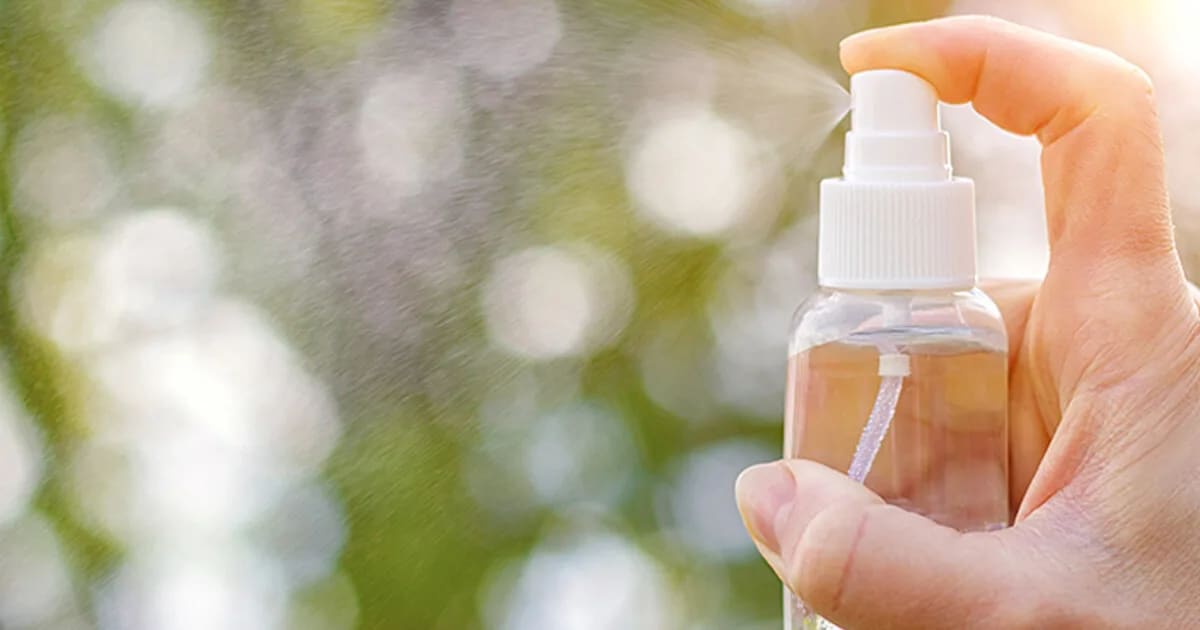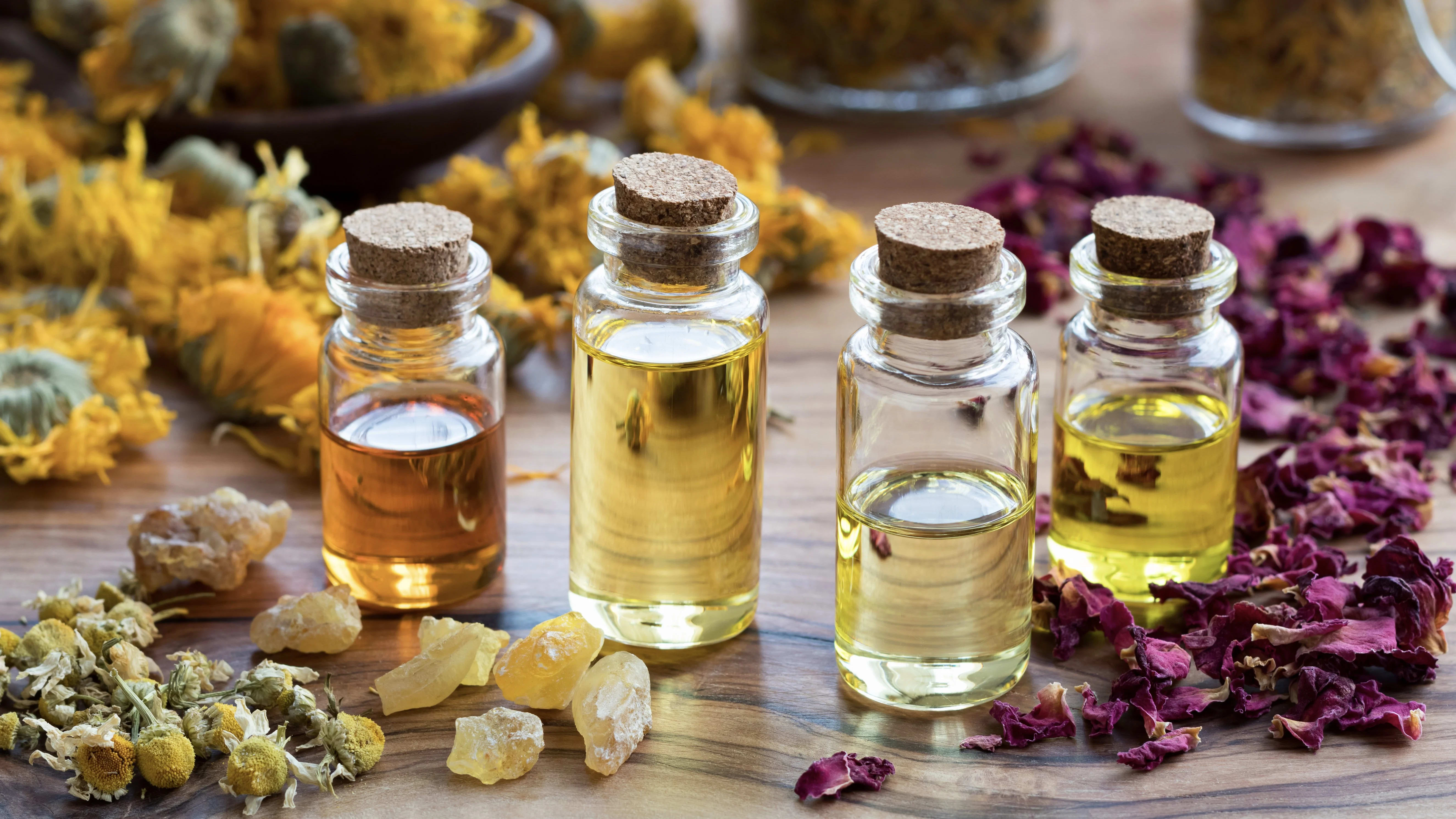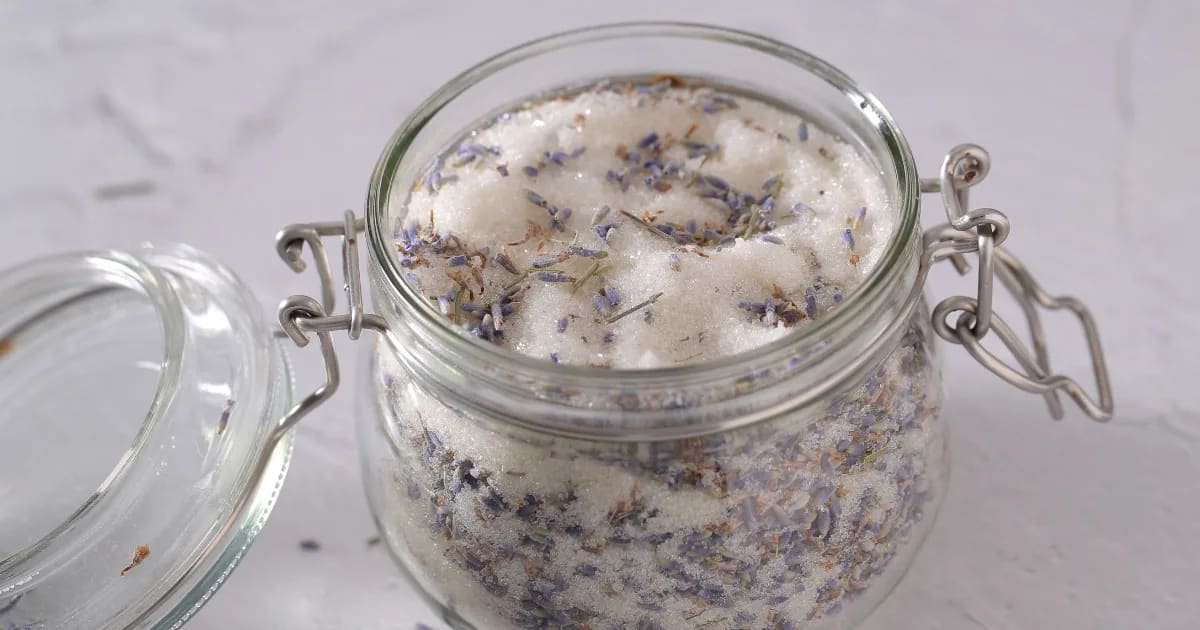What are hydrosols? (Are they similar to essential oils?)

Hydrosols are aromatic waters with therapeutic benefits.
Like essential oils, hydrosols are distilled from aromatic plants.
And like essential oils, hydrosols offer medicinal uses for the body, heart, and mind.
While hydrosols have much in common with essential oils, they're very different.
In this post, you'll learn:
What are Hydrosols?
How to use Hydrosols
Hydrosol Distillation vs. Essential Oil Distillation
Testing a Hydrosol's Purity
5 Hydrosols for Skincare, Relaxation, and More!
What are Hydrosols?
Hydrosols are the water portion of a distillation.
The best way to explain the difference between essential oils and hydrosols is with the distillation process.
When an aromatic plant—Lavender, for example—is loaded into a still with water, the still is heated with steam. The plant's essential oils are held in microscopic sacs, or glands, on the flowers, leaves, and twigs. (Other plants hold their essential oils in the roots, wood, seeds, or other plant parts.)
The steam breaks open the sacs, releasing the Lavender essential oil.
Most of the essential oil floats to the top of the water. There are some oils from certain plants that the opposite is accurate, and the oil is heavier than the water.
And the water itself absorbs the Lavender's water-soluble compounds and a minuscule amount of essential oil. The water is now hydrosol! (You may also see hydrosols called herbal distillates, aromatic waters, essential waters, or hydrolats.)
From one distillation, we have two products:
essential oil and hydrosol.
Sometimes a plant's hydrosol smells very similar to its essential oil.
Other times, the hydrosol smells completely different! For example, Myrrh essential oil and Myrrh hydrosol—which can be created during the same distillation—have dramatically different scents.
Hydrosols are much gentler than essential oils because they're not as highly concentrated. They're ideal for sensitive skin—even for babies and children.
How to Use Hydrosols
Hydrosols can be used all by themselves, spritzed directly onto the skin.
They also blend well in water-based recipes.
If you have a recipe that calls for water—such as a room spray or even a homemade lotion—you can replace the water with hydrosol for additional therapeutic benefits and a sweeter aroma.
Some hydrosols are perfect natural cleaning agents, such as Lemon Verbena. They can freshen the air, linens, upholstery, carpets and even help keep surfaces clean.
Blending essential oils into hydrosol requires an extra step since the water-based part of your blend won't blend with the oil-based part of your blend. You'll need to add a dispersant, such as Solubol, to help keep the essential oils distributed through the hydrosol. (About 4 drops of Solubol dispersant for every 1 drop of essential oil is a good blending guideline.)
Many hydrosols are even drinkable... though not all of them taste good!
Hydrosol Distillation vs. Essential Oil Distillation
As mentioned above, distilling an aromatic plant specifically for hydrosol is somewhat different from distilling for essential oil.
Both products are naturally created during distillation, but there are a few variations in the process when we distill specifically for hydrosol:
Fresh plant material is used to distill hydrosols.
When hydrosol is a by-product of essential oil distillation, dried plant material is often used. But when the hydrosol itself is the goal, distilling it with fresh plant material is ideal, giving us a vibrant, therapeutic hydrosol.
An exception to this is resins. Both newer and older resins can be distilled to create hydrosols and essential oils.
The distillation process is usually longer for hydrosols.
For example, a Lavender essential oil distillation is complete after about 20"-30 minutes. Most of Lavender's oil-based therapeutic components only take that long to express from the plant.
However, the distillation process for Lavender hydrosol continues for nearly an hour.
This allows more time for the water-soluble therapeutic components to release from the plant material.
The distillation time also affects the aroma of the hydrosol.
If we follow through with the full distillation time, we'll get a hydrosol rich in the maximum amount of therapeutic components—which means the aroma may be a bit bolder.
If a hydrosol is intended to be used as a perfume, it's distilled for a shorter time. This limits the number of therapeutic components that come through and keeps the aroma light and sweet!
How do we know when to stop the distillation process?
We look for some key indicators that a hydrosol has reached its full therapeutic potential...
Ph
Aroma
Taste
Testing a Hydrosol's Purity
Once a hydrosol is finished, it's possible to do a GC/MS test to help ensure its purity.
GC/MS (Gas Chromatography/Mass Spectrometry) is a lab test that can be done on essential oils to determine which components are present in the oil.
The GC/MS report tells us whether the oil is pure or contains adulterants (like synthetics) and how much of each component is present. Think of a GC/MS report like an "ingredients list" for an essential oil. (Learn more about GC/MS in this post by Andrea!)
The GC/MS equipment used for essential oils differs from the GC/MS equipment used for hydrosols (which is highly expensive). The hydrosols' GC/MS test identifies and tests the teeny-tiny amount of essential oil in the hydrosol.
If a hydrosol's GC/MS report says, it contains 30% 1,8-cineole, that doesn't mean the hydrosol itself is made of 30% 1,8-cineole.
It means that the minute amount of essential oil present in the hydrosol contains 30% 1,8-cineole.
While this test shows us what chemical components are in a hydrosol's minute essential oil portion, it doesn't show us what makes up the water portion. We generally go by what herbalists have researched for the plant part and herb.
If you want to check out a few GC/MS reports for hydrosols, Ann Harman's Circle H Institute offers free access to the reports.
At Circle H Institute, Ann shares nearly 15 years' worth of study, analysis, experiments, and research on hydrosols (most of which she pays for and makes available to the public.)
The best way to purchase pure hydrosols is to buy from aromatherapy companies that practice transparency as much as possible. I prefer to use hydrosols that are distilled for themselves and not treated as by-products of another distillation. (You can ask your aromatherapy supplier about their hydrosol production practices.
What's the Shelf Life of a Hydrosol?
In general, hydrosols have a 1-2 year shelf life.
That's assuming proper distillation techniques were used, and all the equipment was sanitized—including the bottles the hydrosol is poured into and stored in. The bottles must also be tightly closed and stored in a cool area.
If you're using hydrosol in a blend (or simply pouring it from one container into another), be sure to sanitize very well:
Use a 190-proof alcohol (such as Everclear)
Combine 70% of your 190-proof alcohol and 30% water
Use your solution to clean the inside of the bottle and the cap/spritzer top
Allow it to air dry (don't touch the bottle with a paper towel or cloth)
Ensure that everything the hydrosol (or the blend you make with it) touches is completely sanitized.
5 Hydrosols for Skincare, Relaxation, and More
Most aromatic plants give us hydrosol.
If you're new to hydrosols, here are 5 you can get started with.
German Chamomile Hydrosol (Matricaria recutita)
The white and yellow flowers of the Matricaria recutita herb produce a fresh, sweet, herbal hydrosol that's profoundly soothing for the skin.
Use it for:
Calming the heart and mind
Soothing irritated skin issues, such as chafing or itching
Cooling hot, red areas of skin
Spritzing directly onto minor cuts, scrapes, and bruises
Protecting vulnerable skin issues from germs
Bug bites (Spray it right on the bite!
Comforting itchy, irritated eyes
German chamomile hydrosol is one of my favorites for anything related to the eyes. You can spritz it right onto your eyes or make a small compress. Just soak a cotton ball with hydrosol, and apply it gently over your closed eye.
Lavender Hydrosol (Lavandula angustifolia)
Lavender hydrosol is distilled from the gorgeous purple blossoms, leaves, and stems of lavender plants. It has a floral, sweet, herbal scent with hints of honey.
Just like lavender essential oil, hydrosol is incredibly versatile! (However, it's not ideal for use on the eyes.)
Use it for:
Calming the heart
Releasing worries and reassuring the mind
Getting a good night's sleep
Daily skincare routines for a clear, calm complexion
Cooling hot, red areas of skin (such as after a long day in the sun)
Spritzing directly onto minor cuts, scrapes, and bruises
Room spray that fills the air with a welcoming floral aroma
Freshening linens and upholstery
Lavender hydrosol is especially gentle and comforting for children and babies. You can spritz it directly on their skin! It's so soothing for itching and red areas.
Lemon Verbena Hydrosol (Aloysia citrodora)
Distilled from the plant's leaves, Lemon verbena hydrosol has a fresh, citrusy, sweet scent, which makes it perfect as an air freshener!
Use it for:
Deep relaxation after a stressful day
Getting a good night's sleep
Daily skincare (It makes a great toner!)
Cooling hot, red areas of skin
Soothing irritated, itchy skin
Caring for achy muscles and joints (Make a compress.
Supporting immunity (especially during the cold season)
Freshening linens and upholstery
Air purifying room spray during cold and allergy season
Natural cleaning
Lemon verbena hydrosol is purifying and can help reduce the presence of microbes, including on the skin (which is why I suggest using it as a toner). This means it's also at home in natural cleaning blends, such as surface sprays. Or use it as a room spray to freshen the air and reduce airborne threats.
Try adding a teaspoon of fresh lemon verbena hydrosol to a glass of water when you want to relax and boost your immunity. Tastes great!
Peppermint Hydrosol (Mentha x piperita)
Peppermint hydrosol is minty, refreshing, and energizing! It's distilled from the green leaves of the peppermint herb and is one of the most sparkling, uplifting hydrosols in the aromatherapy world.
Use it for:
Mental clarity and energy
Waking up in the morning (or afternoon!)
Feeling positive in the moment and optimistic about the future
Cooling hot, red areas of skin
Relaxing tense or cramping muscles
Settling your stomach
Opening your breath
Supporting immunity
Freshening linens and upholstery
Air purifying room spray during cold and allergy season
Natural cleaning
One of my favorite ways to use peppermint hydrosol is to settle my stomach. Add 1 teaspoon to 8 oz of water, and sip it slowly. (This also makes a refreshing, cooling drink on a hot day!)
Sweet Grass Hydrosol (Hierochloe odorata)
Sweet Grass Hydrosol is a favorite among aromatherapists for purifying a space! Its sweet, herbal, vanilla-like scent is used to clear unwanted energy and usher in positive spiritual influences
Use it for:
Grounding and balancing
Feeling calm and reassured
Air fresheners, especially in closets and bathrooms
Freshening linens and upholstery
Natural cleaning
Sweet Grass has been popular for centuries among Native Americans, who traditionally use it for prayers and purifying ceremonies. The Grass is braided and burned to "smudge" an area with cleansing smoke.
Think of sweet grass hydrosol as a "smudge spray."
Using Every Portion of the Distillate
Hydrosols allow us to use every portion of the distillate to receive the full spectrum of a plant's healing, therapeutic gifts.
At Aromahead, we like to get our hydrosols from Aromatics International. They've built a company based on relationships, sustainability, and transparency. Here's where you can see their collection of hydrosols.
Indeed, hydrosols aren't as widely used as essential oils, but that's mostly because they're not as well known.
Once you know them and find a few favorites, you'll find dozens of uses for them in your daily life!





